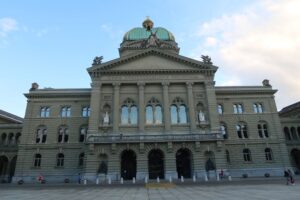The Confoederatio Helvetica
12 September 2023
The abbreviation CH is derived from the official Latin name “Confoederatio Helvetica”. Curia Confoederatis Helveticae (CH) appears on the facade of the Federal Palace in Bern.
Switzerland is the only European country with a Latin abbreviation with no linguistic relation to its current name. Helvetica refers to the Celtic tribe of Helvetians that inhabited the Swiss midlands more than 2 000 years ago.

Bern, the federal palace (Bundeshaus/palais fédéral)

Melide, Swiss Miniature
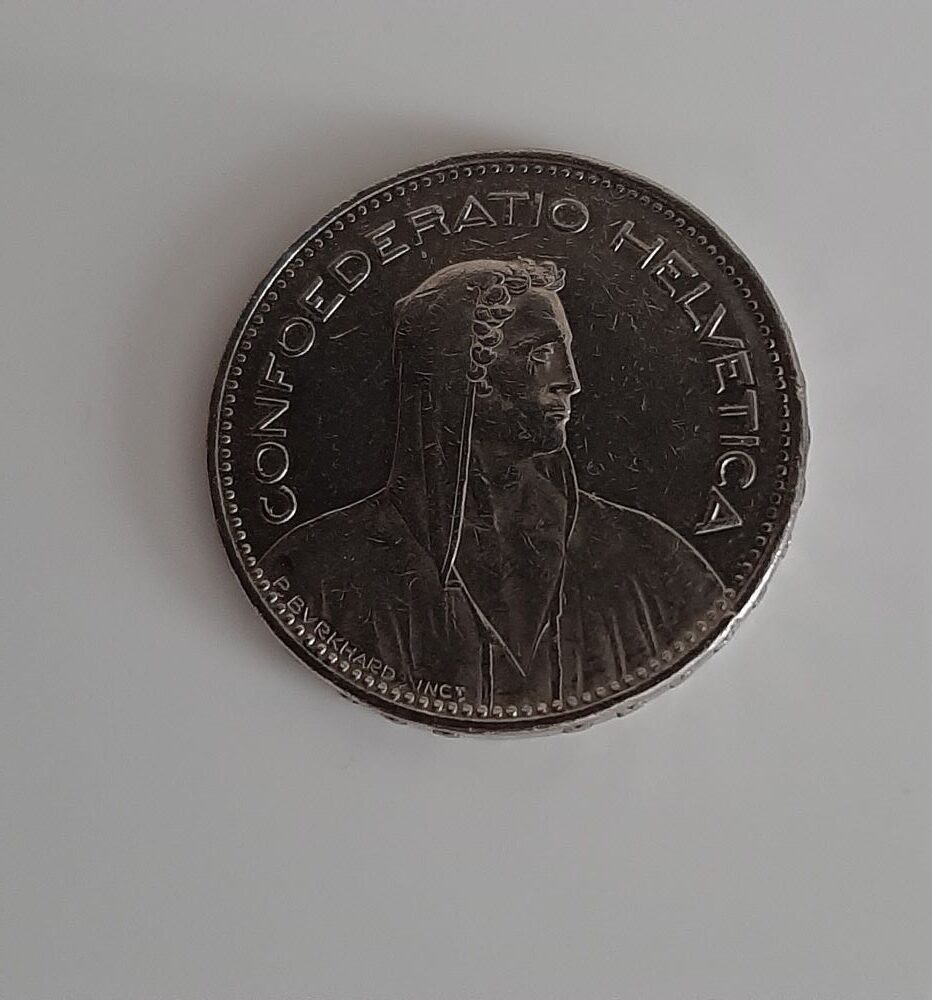
The alpine pastor and not Wilhelm Tell, five frank coin from 1920.
An alliance of the Orte Uri, Schwyz and Unterwalden formed the (official) beginning of today’s Swiss Confederation. The term canton dates back to the 16th century. This alliance was ratified with an oath (Eid) in 1291, hence the name Eidgenossen and Eidgenossenschaft.
Such alliances between cities and regions were common at the time. Other cities, for example, Bern and Freiburg, also made alliances decades before 1291. What is unique about these alliances is that they led to today’s country with its 26 sovereign cantons!
The Hanseatic League (from the 12th to the 16th century), the Rhineland League of Cities (1254-1257, 1381-1389), the Schmalkaldic League (1530-1546), the Swabian League of Cities (1331-1381), the Swabian League (1488-1534) and, for example, the Ten Cities League or Decapolis (1354-1679) are examples of alliances that existed only for shorter or longer periods.
The 1291 alliance was renewed in 1315. The document has survived and is today on display at the Bundesbriefmuseum in Schwyz.


Landesmuseum Zurich, the Tagsatzung of the 13 cantons (top) and a later copy of the 1291 Charter (bottom).
The Confederation developed over the centuries. In 1513, for example, an Eidgenossenschaft of 13 German-speaking cantons (only Fribourg/Freiburg was bilingual) gradually emerged, but without a federal constitution. The cantons were sovereign.
Today’s canton of Graubünden also shows the uniqueness of the Confederation. In the late Middle Ages, Graubünden consisted of three sovereign republics: the Gotteshausbund (1367), the Obere- or Graue Bund (1395 ), hence the name Graubünden, and the Zehngerichtenbund (1436). These three sovereign republics united in 1524 to form the Free State of the Three Leagues (Freistaat der Drei Bünde). This sovereign state became an ally of the Confederation and eventually a canton in 1803.
The Peace of Westphalia (1648) confirmed the independence and sovereignty of the Swiss Confederation. After annexing a part of the prince-bishopric of Basel in 1792/1793, the French army invaded Switzerland in 1798.
Napoleon then founded the Helvetic Republic (1798-1803), a unitary state without independence of the age-old cantons, modelled on the Batavian Republic (1795) in the Netherlands. However, resistance from the cantons was so strong that this republic ceased to exist in 1803.

Picture: Nidwalder Museum, Stans
In 1803, Napoleon established a new confederation by the Act of Mediation (Mediationsakte/Acte de Médiation. This Confederation (1803-1813) included thirteen old and six new cantons (Aargau, Ticino, St Gallen, Thurgau, Vaud and Graubünden). This Confederation had thus 19 cantons.
After Napoleon’s defeat and the Congress of Vienna in 1815, the new Confederation consisted of 22 cantons, including the new cantons of Valais, Geneva and Neuchâtel. This Confederation was based on an agreement (Bundesvertrag) between the cantons. There was still no federal constitution. The canton of Jura was created in 1979 as a separation from the canton of Bern, to which it had belonged since 1815 (Congress of Vienna).
After the Sonderbund War of 1847 between Catholic cantons that did not want a strong confederation and Protestant and some Catholic cantons that did want a strong confederation, the Federal Constitution of 1848 confirmed the status of the current Confederation.
In 1874 and 1891, two crucial instruments were introduced by which citizens (since 1971 also female voters) could influence federal legislation and even the Constitution: the optional referendum (fakultatives Referendum) for national legislation and the popular initiative (Volksinitiative) for changes in the Constitution. The mandatory (obligatorisches referendum) for a constitutional amendment by the government already existed in 1848.

The revision of 1874. Collection Landesmuseum Zurich
The constitutional amendments of 1 January 2000 confirm the relationship between the Confederation, cantons, municipalities and citizens and the primacy of federal law over cantonal law.
The Confederation has jurisdiction in all areas expressly assigned to it by the Constitution, i.e. only with the consent of the citizens and cantons. Other tasks and powers are the responsibility of the cantons. The cantons, in turn, delegate powers to the municipalities. Even within the cantons and municipalities, citizens have the final say in referendums and popular initiatives. At this level, too, citizens have the last or even the first word!
The national government is called the Bundesrat/Conseil fédéral. The Constitution provides for seven ministers for seven departments in the government.

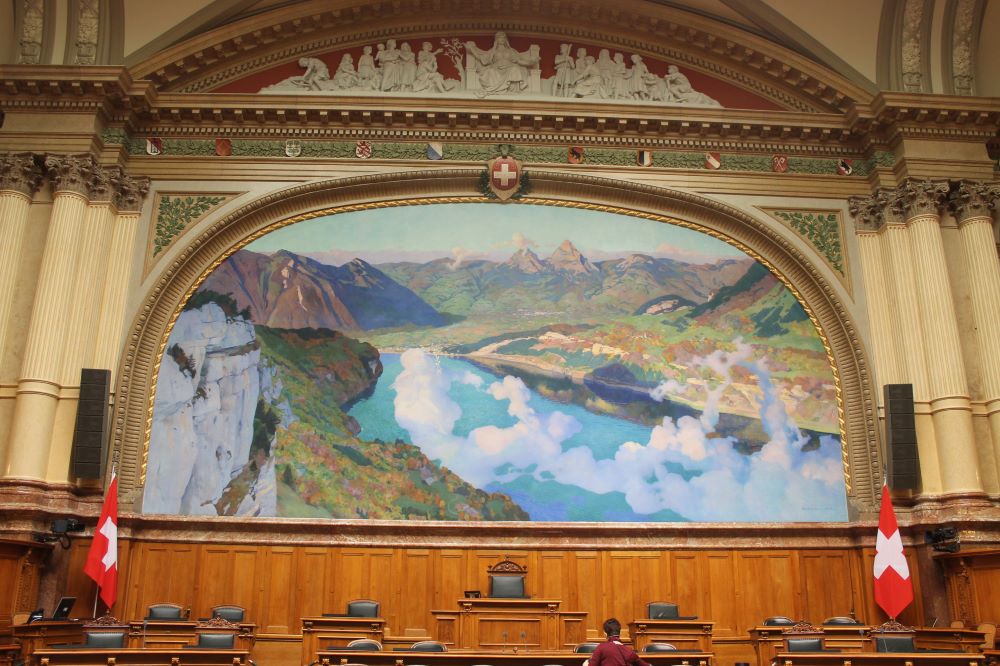
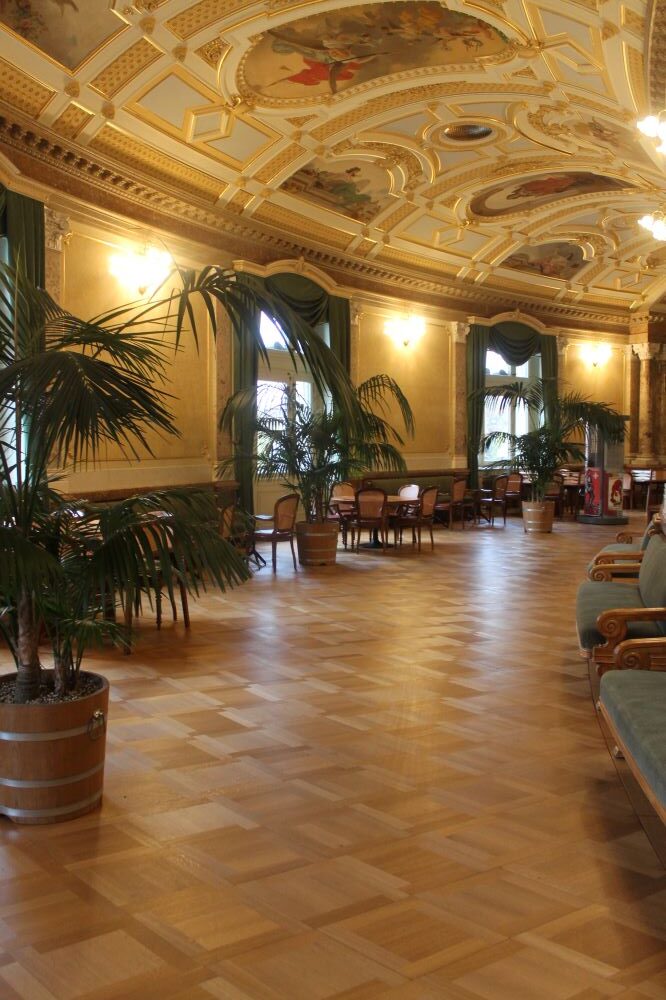
The national parliament
The Swiss parliament consists of two chambers. The Upper House is the First Chamber or National Representation of the people (Nationalrat/Conseil national), and the Lower House is the Second Chamber or Senate or the Council of States (Ständerat/Conseil d’Etats) representing the twenty-six cantons.
These two chambers are the National Assembly (Bundesversammlung/Assemblée fédérale). It consists of 246 members: 200 members of the National Representation and 46 members of the Council of States.
The 46 members of the Council of States represent their canton with two delegates per canton. Six cantons (Obwalden, Nidwalden, Basel-Stadt, Basel-Landschaft, Appenzell innerrhoden and Appenzell Ausserrhoden) have one seat.

The Landsgemeinde Trogen (Kanton Appenzell Ausserrhoden) 1814. collection: Kantonsbibliothek Appenzell Ausserrhoden
The Constitution recognises municipalities, Switzerland’s oldest bodies. They existed long before the cantons and much longer before the Confederation of 1848.
The municipality is the smallest political unit in Switzerland. There are about 2,200 municipalities. The municipalities perform the tasks assigned to them by the cantonal Constitution.
In the larger municipalities (except for Rapperswil-Jona in canton St. Gall), about one in five, the legislature is represented by a parliament, in the others by a municipal assembly in which all residents with voting rights can participate.
Switzerland functions on the principle of subsidiarity. (Delegated) power is exercised first by the municipalities, then by the cantons and then by the Confederation. Those directly affected by them should make decisions. The communes, municipalities or cities are the micro-laboratories of direct democracy, followed by the cantons.
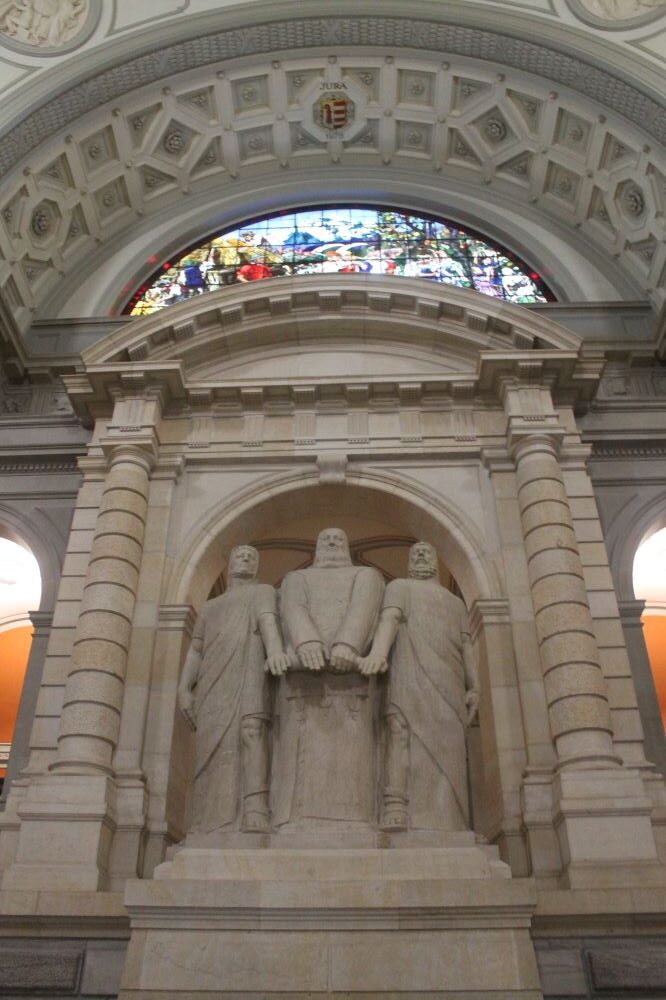

Bern, the federal palace and the 26 cantons, canton Jura was added in 1979
Each canton has its Constitution, parliament, government and courts. The cantons are sovereign unless they have ceded powers to the Confederation. In many areas (including health, education, justice, police, and taxation), they have a high degree of autonomy.
The cantons have sovereignty over the organisation of police, justice and the courts, but within the framework of and respecting federal law, the federal Constitution and international treaties. The highest court is the Federal Supreme Court (Bundesgericht/Tribunal fédéral) in Lausanne. It has three specialised courts in Bellinzona (criminal law), St Gallen (administrative law) and Lucerne (social security law).
Conclusion
Switzerland is a linguistically, religiously, culturally and economically divided country. Yet at the political level, the country functions (relatively) well. The 26 fountains in front of the federal parliament symbolise this unity in the diversity of the cantons.


Geneva, national referendum, September 2022
Direct democracy, federalism, subsidiarity and the unique electoral system are the pillars of the system. The electoral system has a combination of a proportional representation for the legislative bodies (the parliaments at national, cantonal and municipal levels) and an absolute majority per candidate in the governments of the cantons and municipalities and the national senate in general elections. The national parliament chooses the federal government members by an absolute majority of votes.
In 1848, however, the current situation was not self-evident. The country emerged from a medieval alliance of predominantly sovereign German-speaking towns and cantons.
Between 1291 and 1848, numerous (armed) conflicts existed between the cantons or even within individual cantons. The slogan unus pro omnibus, omnes pro uno at the entrance to the federal parliament in Bern only reflected reality after 1848.
The Constitution of 1848 determines the sovereign powers of the cantons and the people. Only they can delegate powers to the federal level.
In recent decades, however, power has shifted upwards, and the autonomy of municipalities, cantons, and citizens has come under pressure. This discussion is topical at a time of many crises.
The central question is: how (and if so ) can today’s (global) problems be solved at the lowest possible level, the principle of subsidiarity and the milice system (Milizsystem/système de milice)?
On the other hand, there is a difference between the cantons and the Swiss people as founders of the Confoederatio Helvetica and the federation at the national level. The people and the cantons are and remain sovereign unless powers have been transferred to the Confederation. The people and the cantons can (theoretically) reverse these powers at any time.


Bern, the federal palace

Melide, Swiss Miniature

